We awoke to find we were moored in a very pretty part of the canal near the town of Roth. There were 3 optional morning trips today: into the historic and picturesque town of Roth; to Nuremberg city centre; and to the Nazi rally grounds and court of justice outside Nuremberg. We chose to go to the city centre.
It was a half hour bus ride partly along the autobahn. There is no speed limit for cars but buses can go 100km/hr and trucks 80km/hr (yeah right). It’s all very green either side with either crops or plantation forests most of the way. It was cold and pretty dismal with drizzling rain so everyone was rugged up in coats and scarves.
Nuremberg has always been, and is still, a very industrial city. It is the home of the Siemens engineering group and is where Siemens truck engines are made. It is also the home of the top three pencil making companies: Schwan; Faber-Castell; and Staedtler.
The city centre was bombed heavily in the war (as our guide eloquently said, “the Germans started bombing in Spain and moved around Europe, so what goes around comes around”) so a lot of the city is post war but the central castle, with its large dry moat and double outer wall, was able to be restored.

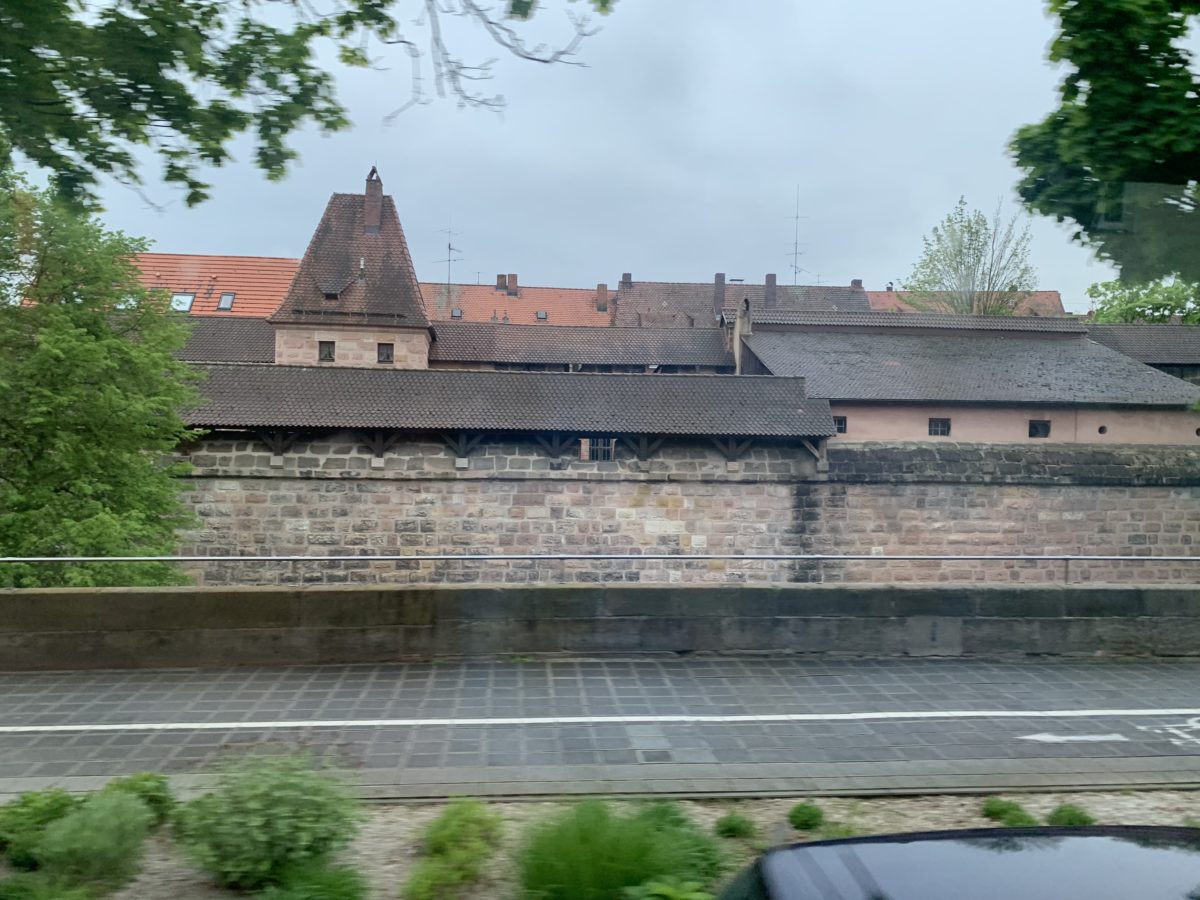
There is also a grand early 20th century railway station and a mix of older buildings.
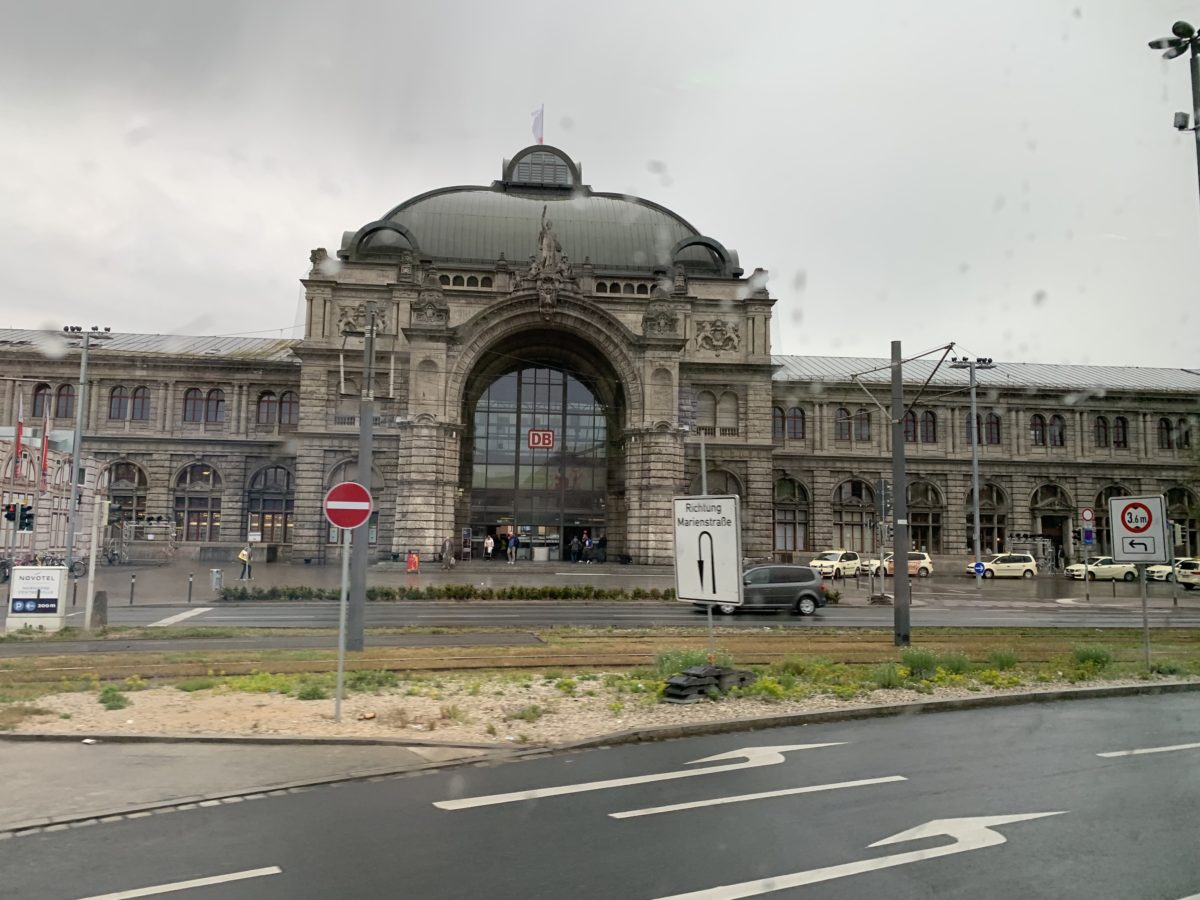
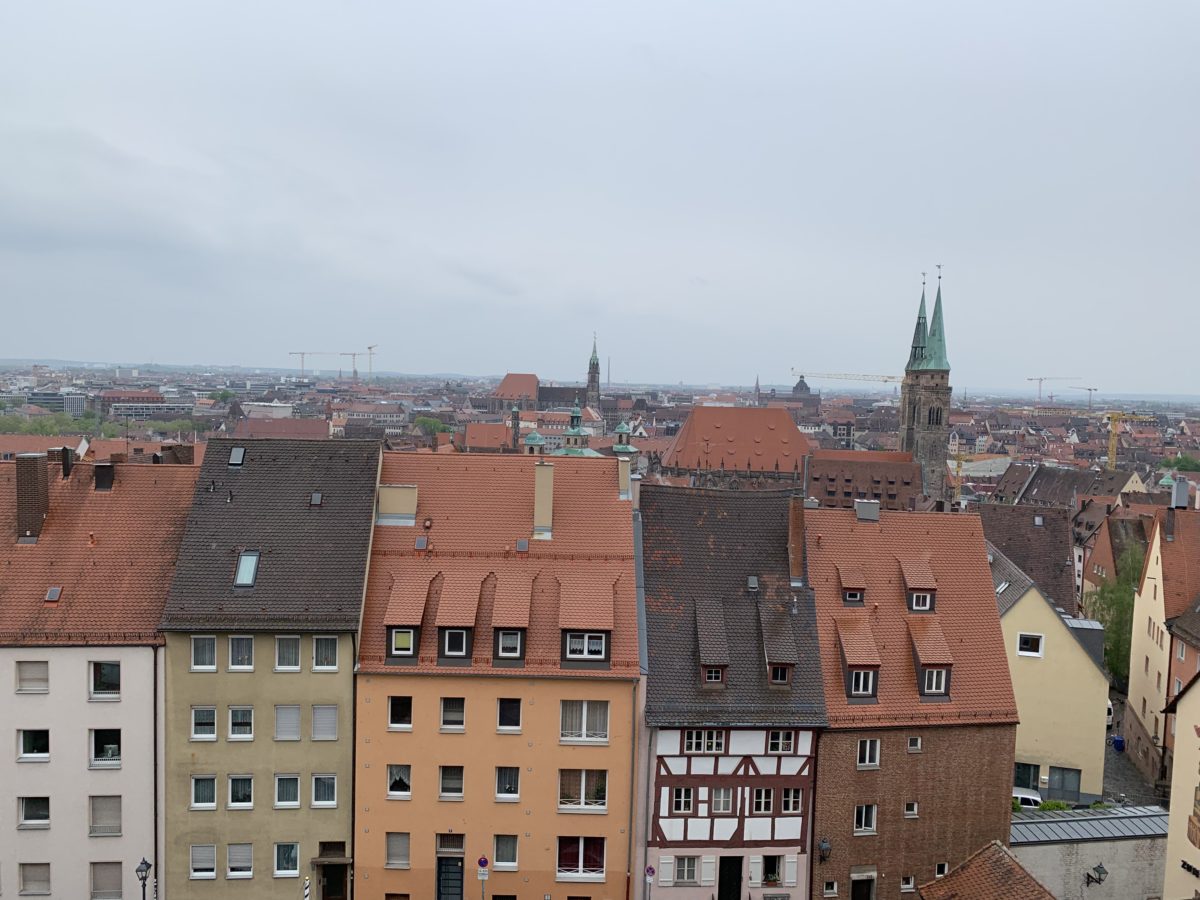
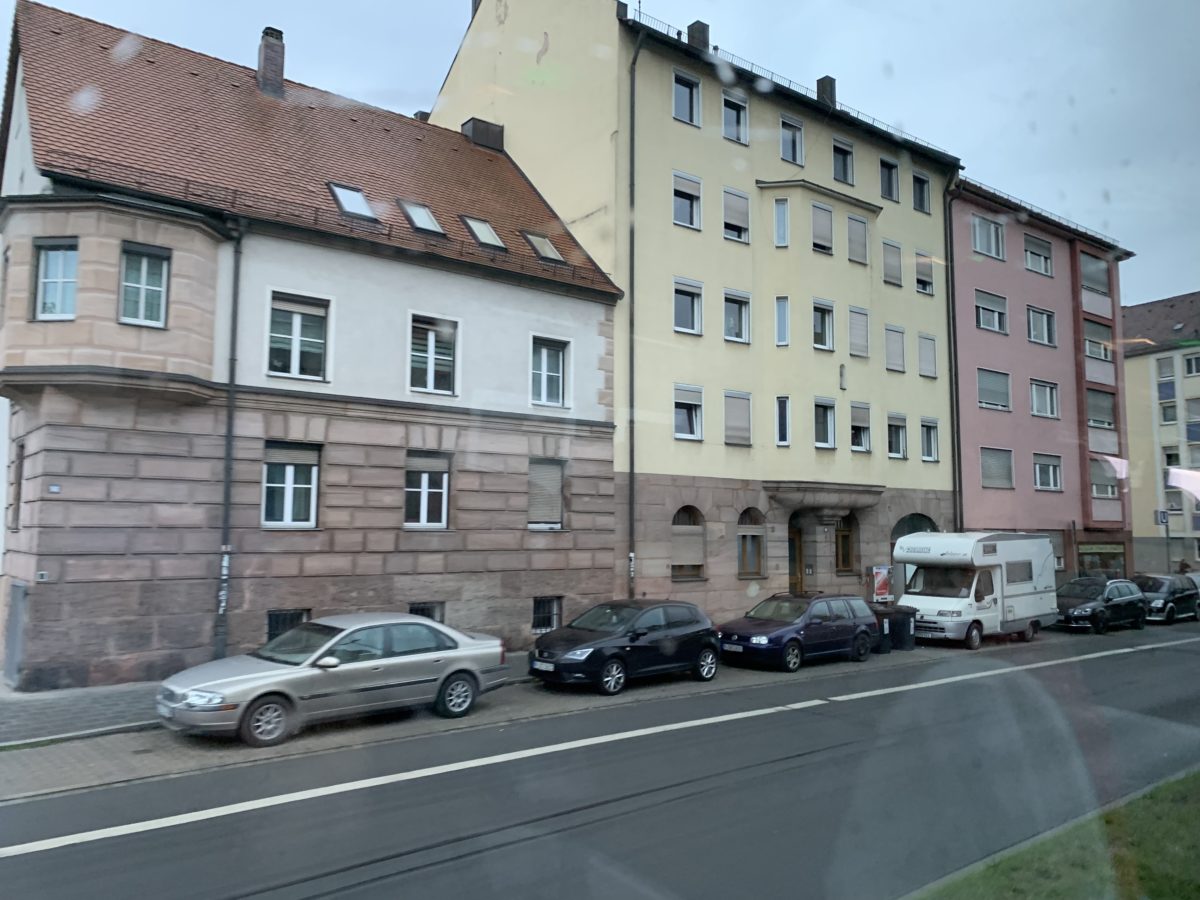

The city has a small river through it and the Mediaeval part got extended as the city grew with a fortified bridge over the river, connecting to a new area of wall. 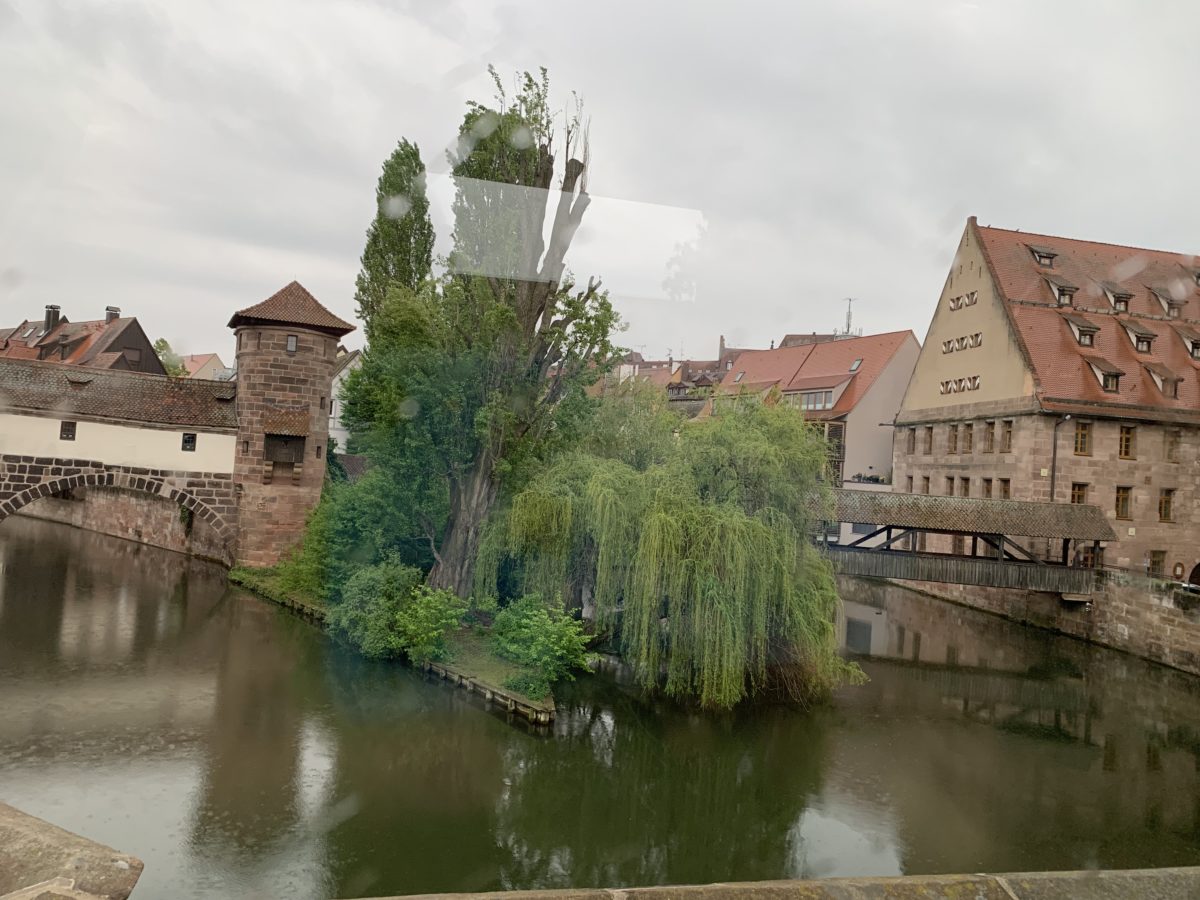
The city is a ‘berg’ (which is surprising given it began with the castle ) thus signifying that it is built on a hill. Not much of a hill, but a hill nevertheless. It has the cobbled streets and was quite charming even on a grey, wet day. The tour took us around the old city in the bus first, then a walk through the castle, past some of the churches and into the marketplace where we had free time.
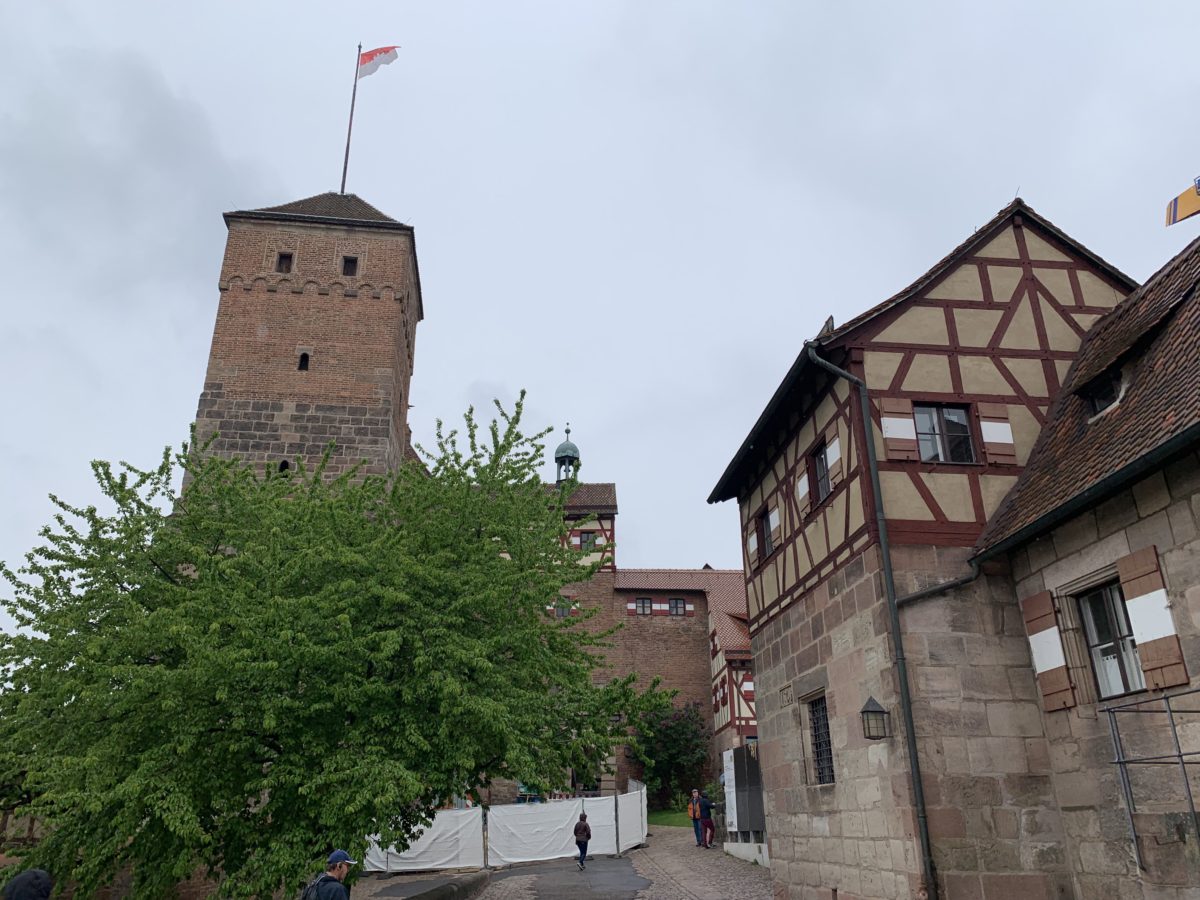
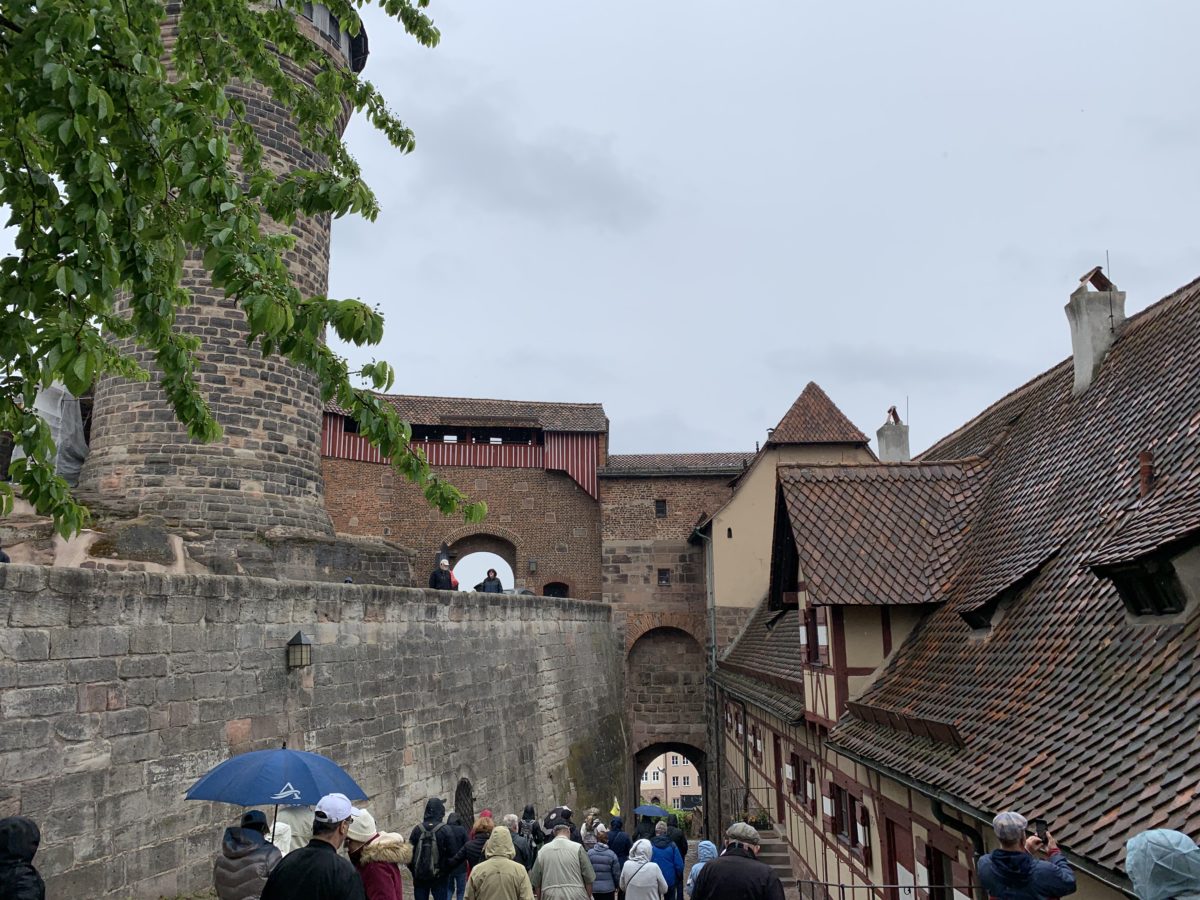
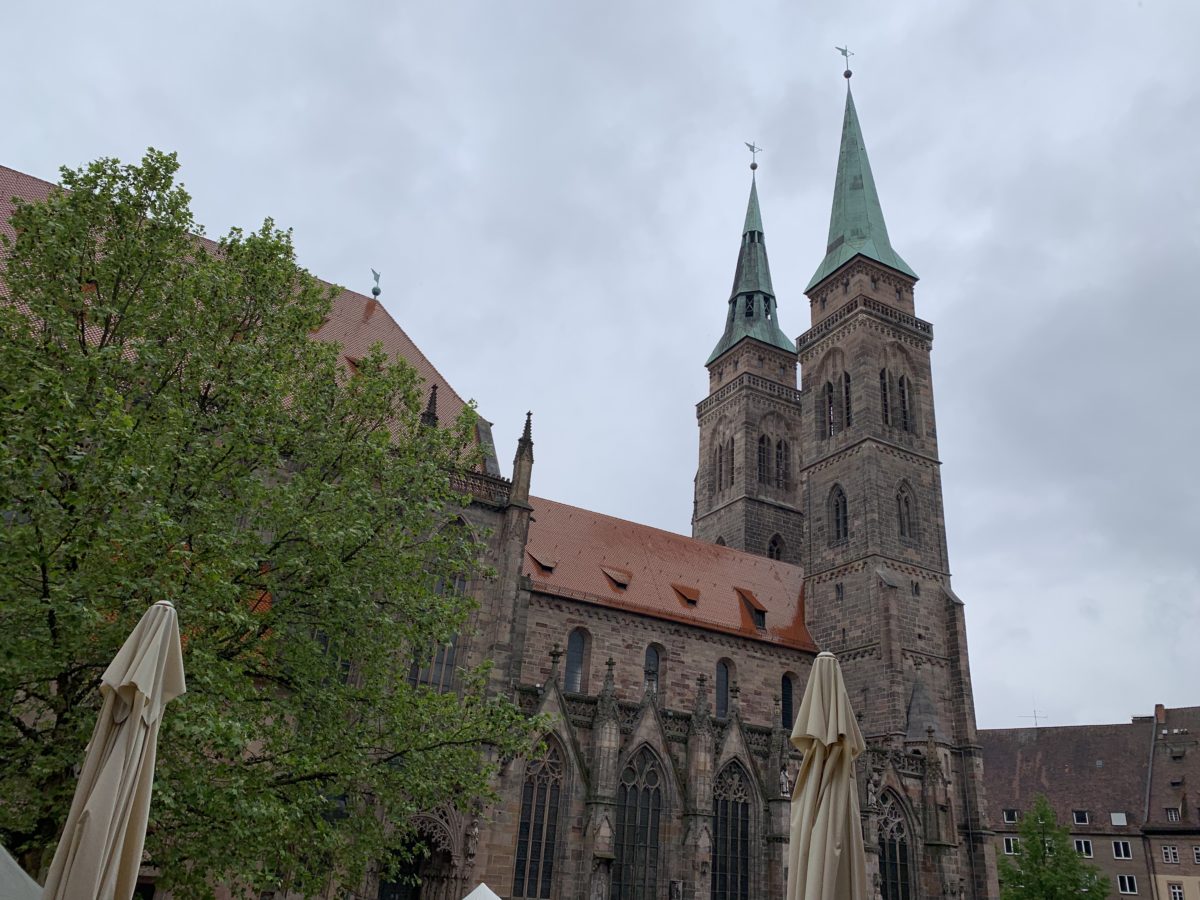
The guide was excellent and explained about the beginning of the reformation when Martin Luthier became concerned about the practice of selling forgiveness for sins by the Catholic Church. Luthier discovered during his time in Rome that the money was being used to fund construction of a new church there ( I assume that was the Vatican). Through a series of unintended events his writings got published and circulated and the Lutheran Church was set up. Thus Nuremberg has both Catholic and Protestant churches. The latter are far less ornate and have art works mainly dating before the reformation, when people still believed they could buy their way out of purgatory.
After the tour we went to the church of St Sebald who is the local saint. 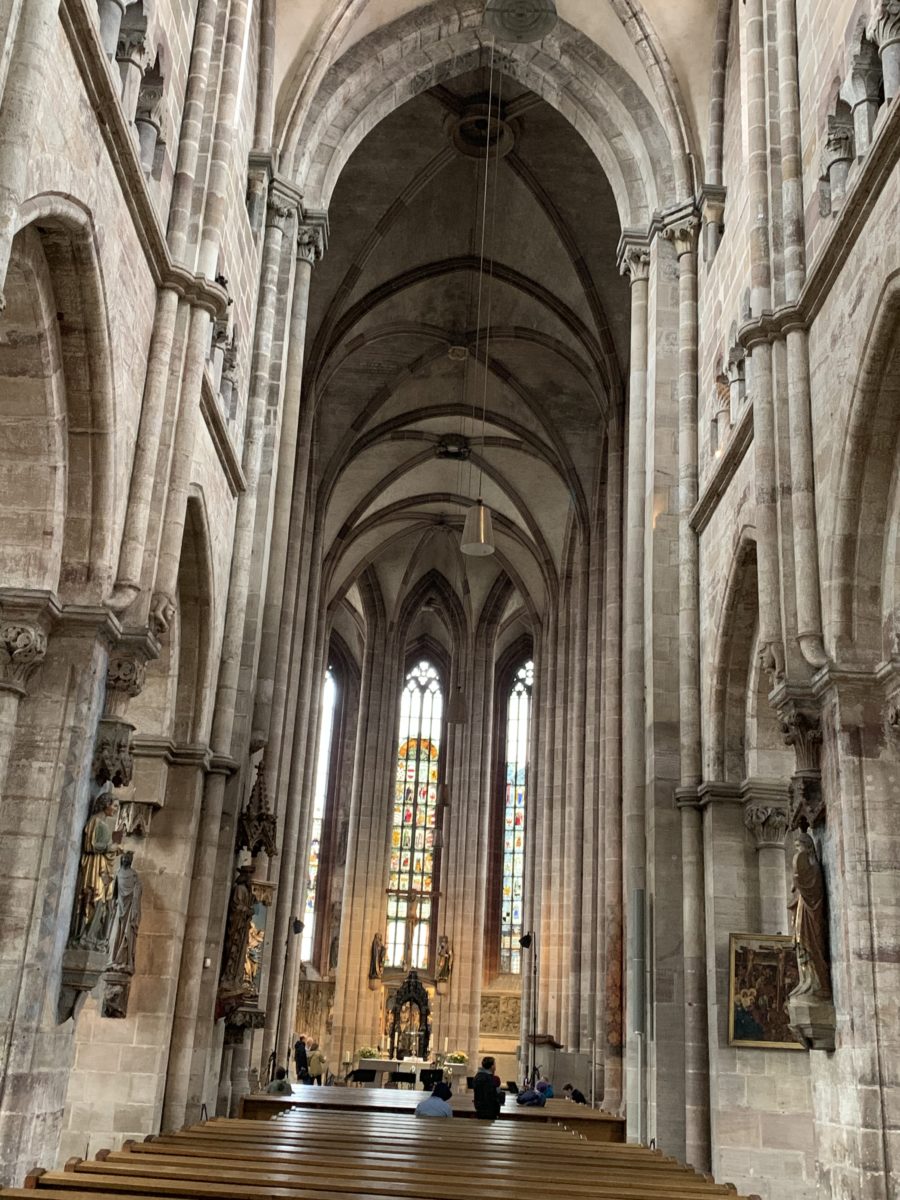
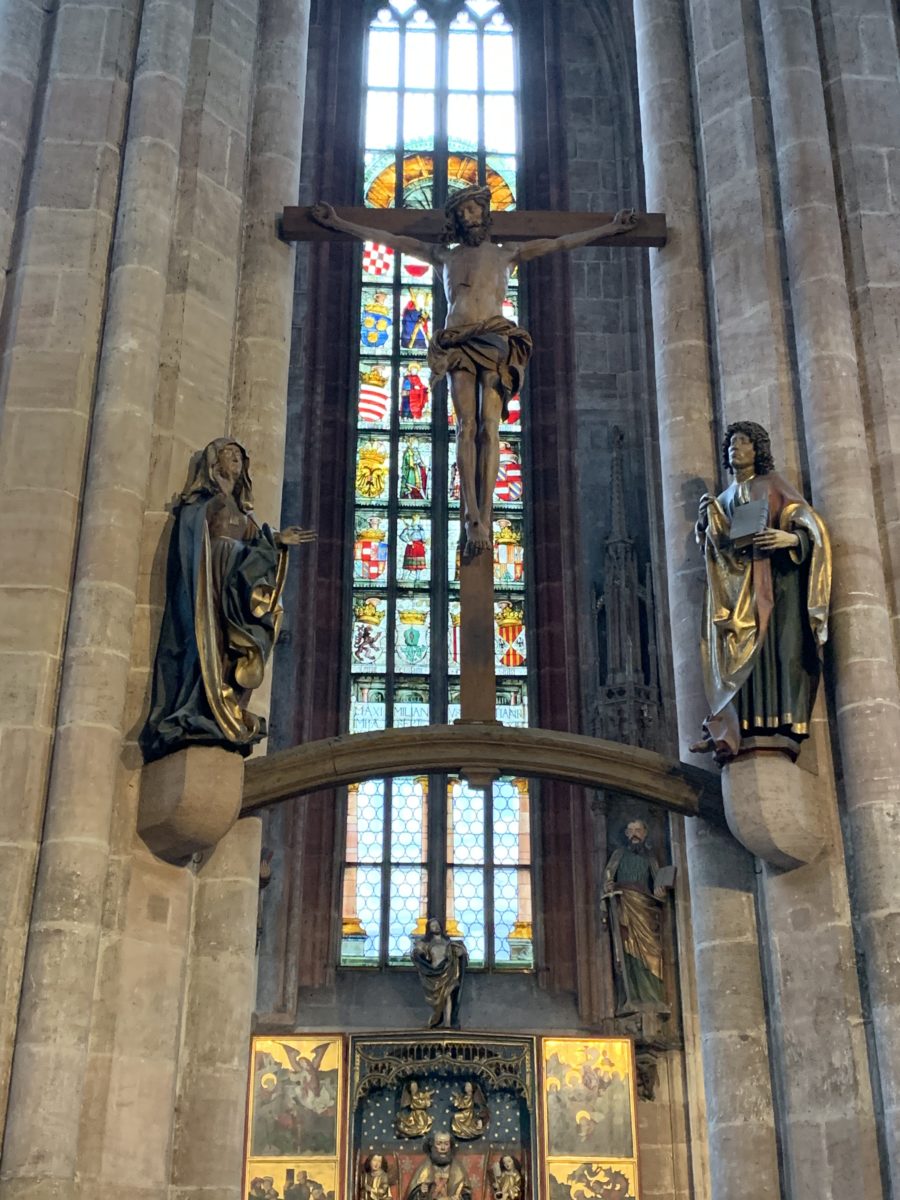
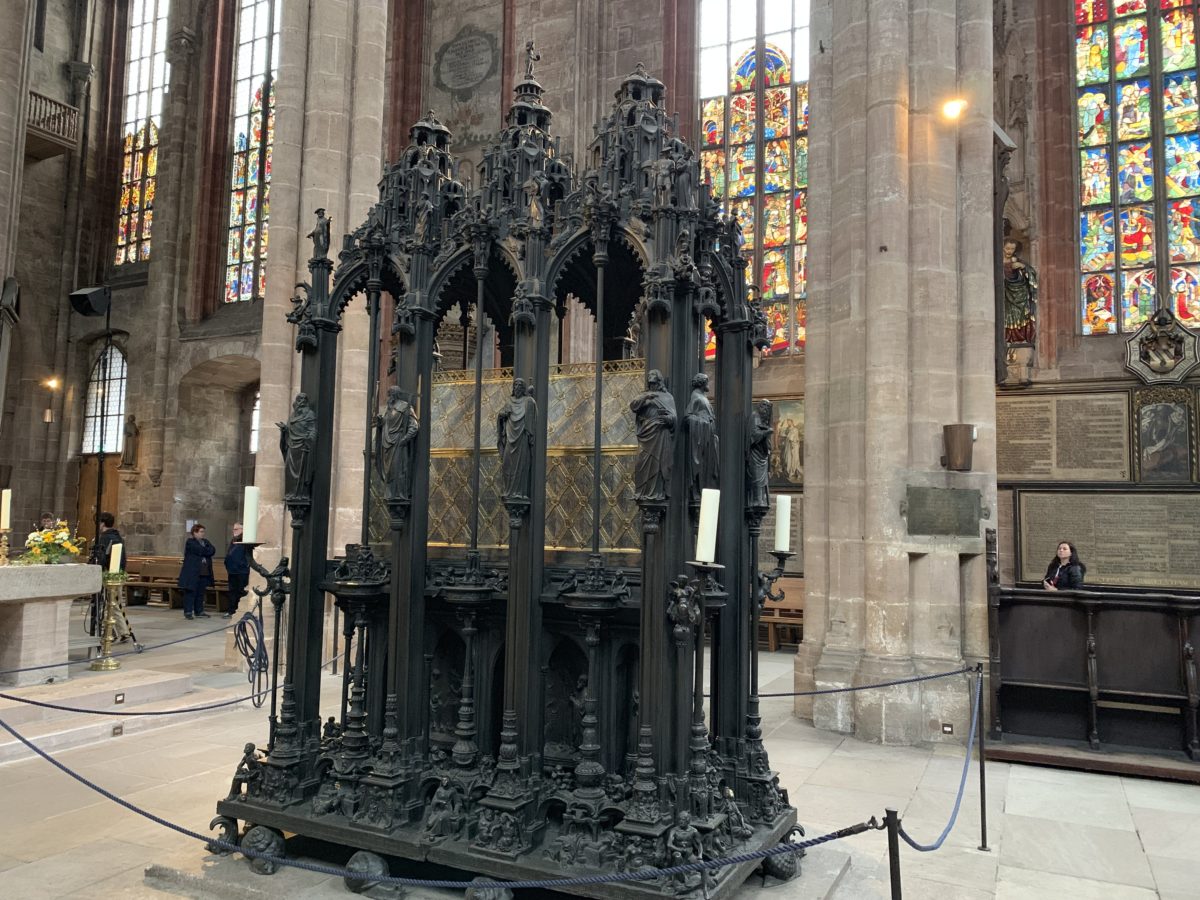
The sarcophagus carrying his bones is encased in an amazingly ornate bronze cage thing with carvings that symbolise the development of mankind from the philosophical ways of thinking and knowing, to the enlightenment brought by Christianity. 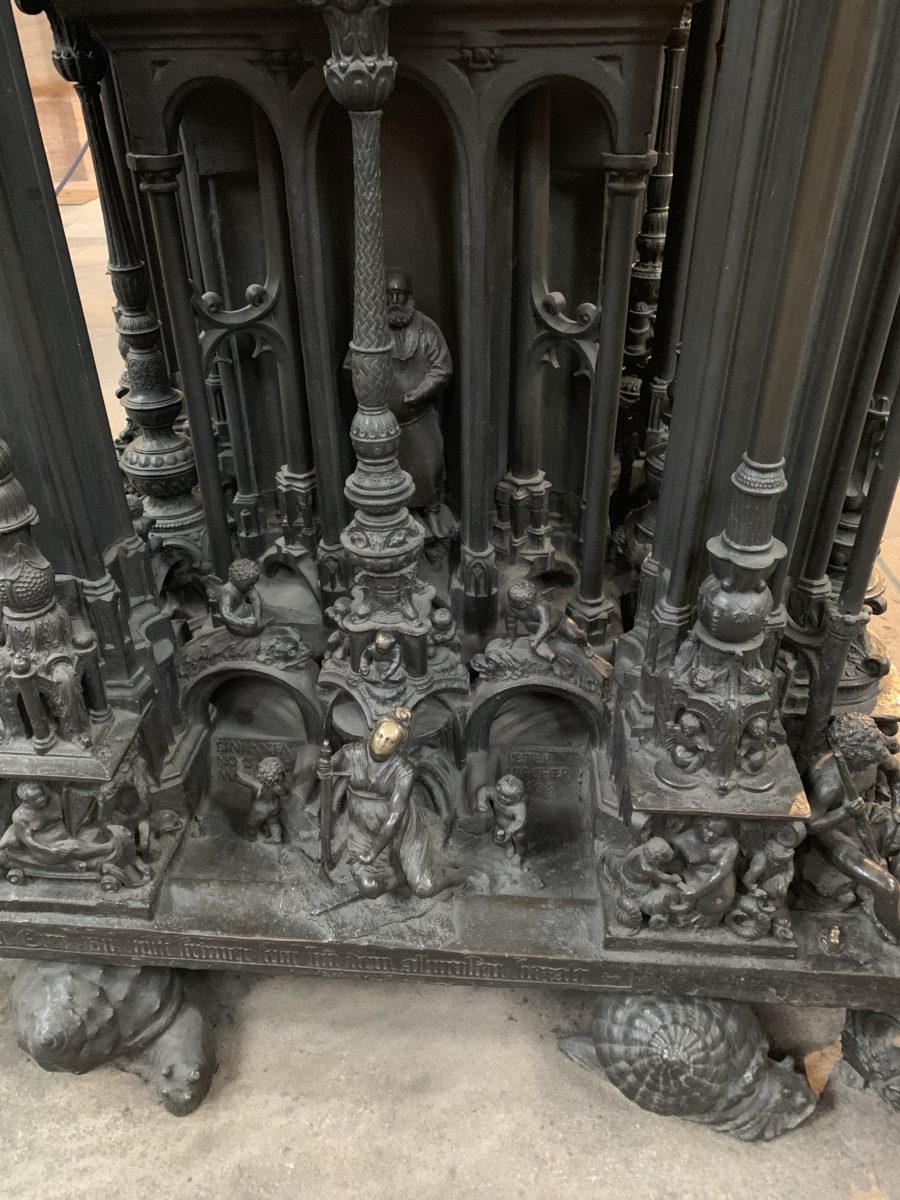 The snails at the bottom represent the earth and each of the sides depicts one of the ancient Virtues showing her to be flawed in some way, with the figures to each side showing the consequences.
The snails at the bottom represent the earth and each of the sides depicts one of the ancient Virtues showing her to be flawed in some way, with the figures to each side showing the consequences.
We got talking to a man who had studied the iconography and gave us a tour of the sculpture with explanation of the lower levels. 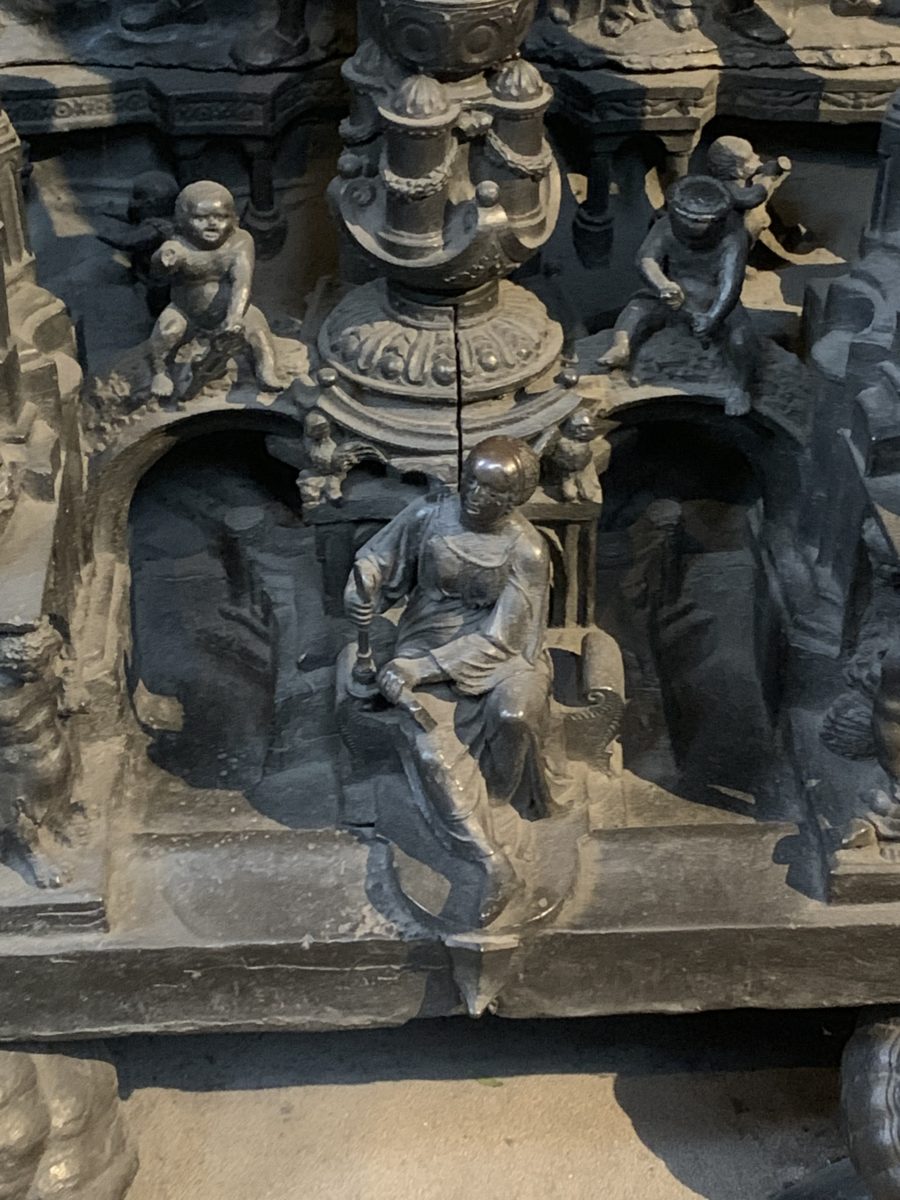
He was fascinating and if we’d had more time I’m sure he would have worked his way up. We spent rather more time in the church than we expected but learned heaps and it was warm. Plus a local brass band was practicing inside.
We only had half an hour before having to meet back for the bus so had a quick coffee and a walk through the shops lining the marketplace and then it was back to the boat for a special German lunch! Sausages, sauerkraut, soup and beer – yay! Of course there was roast suckling pig and salads and poached fish and breads and veggies and cakes and fruits and, and, and… for those that didn’t want to go German.
